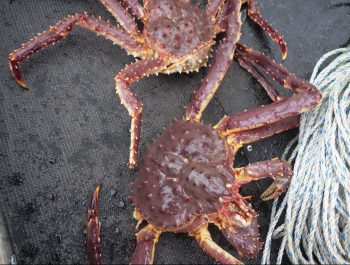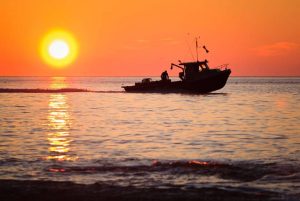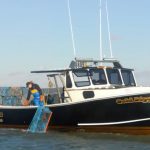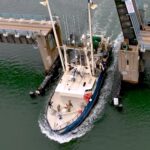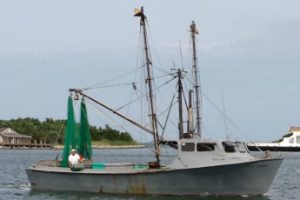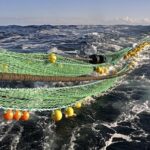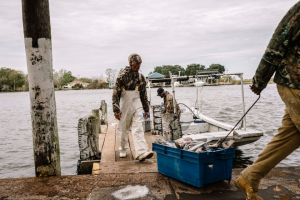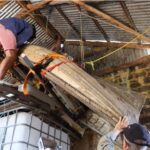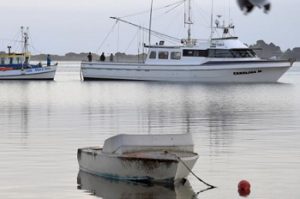Tag Archives: king crab
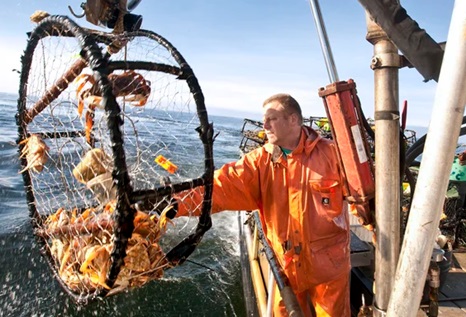
What makes Dungeness Crab Unique
Named after the town of Dungeness, Washington where people first began fishing for these crustaceans in the 1800s, Dungeness crab meat is prized by chefs and seafood connoisseurs alike for its subtle sweetness, and flaky, delicate texture. It’s easy to get lost in the moment when you’re biting into a chunk of delectable Dungeness crab meat. Still, it’s worth pausing to express gratitude toward the crab fishermen (and women) who caught that meal for you. This article covers a lot about these crabs, and you’ll know about a wide variety of crab from Dungeness to King Crab. Dungeness vs. Snow Crab, vs. Stone Crab, Photos, and more, >>click to read<< 16:50
Norway: Cut to king crab quota recommended
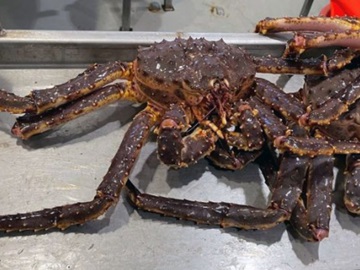 Based on the outcome of this year’s king crab survey, scientists at Norway’s Institute of Marine Research (HI) are recommending a hefty cut in the 2024 king crab quota to not more than 966 tonnes, as the survey results indicate a significant decline in the population. This means a substantial reduction compared to the quota advice for 2023, which was 2375 tonnes. ‘The result from this year’s survey shows a significant decrease in the number of crabs above the minimum target size for fisheries. The fact that we are now seeing a decline in the stock is, of course, bad news for the fishermen,’ said HI population manager for king crab, Carsten Hvingel. >>click to read<< 09:31
Based on the outcome of this year’s king crab survey, scientists at Norway’s Institute of Marine Research (HI) are recommending a hefty cut in the 2024 king crab quota to not more than 966 tonnes, as the survey results indicate a significant decline in the population. This means a substantial reduction compared to the quota advice for 2023, which was 2375 tonnes. ‘The result from this year’s survey shows a significant decrease in the number of crabs above the minimum target size for fisheries. The fact that we are now seeing a decline in the stock is, of course, bad news for the fishermen,’ said HI population manager for king crab, Carsten Hvingel. >>click to read<< 09:31
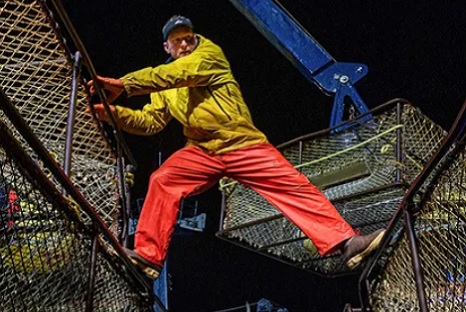
NMFS survey delivers more bad news to Bering Sea crab fleet
A Bering Sea survey by federal scientists contains more bad news for Alaska, Washington and Oregon-based crabbers hoping for an upturn in upcoming harvests that last year fell to rock-bottom levels. The federal survey results for Bristol Bay king crab are bleak and crabbers have been warned that for a second consecutive year there may not be a fall harvest, according to Jamie Goen, executive director of the Alaska Bering Sea Crabbers. “We have got an emergency,” Goen said. “I’m trying to get Congress to act to help.” The National Marine Fisheries Service survey does offer hope for improved harvests three to five years from now, as young snow crabs grow to adult size. >click to read< 12:20
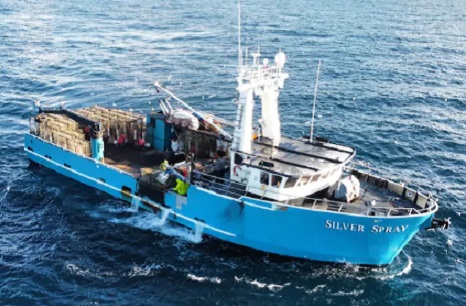
Alaska’s snow crabs have disappeared. Where they went is a mystery.
Gabriel Prout and his brothers Sterling and Ashlan were blindsided. Harvests of Alaskan king crab, the bigger, craggier species that was the star of the television show “Deadliest Catch”, have been on a slow decline for over a decade. But in 2018 and 2019, scientists had seemingly great news about Alaska’s snow crabs: Record numbers of juvenile crabs were zooming around the ocean bottom, suggesting a massive haul for subsequent fishing seasons. Prout, 32, and his brothers bought out their father’s partner, becoming part owners of the 116-foot F/V Silver Spray. They took out loans and bought $4 million in rights to harvest a huge number of crabs. It was a year that many young commercial fishers in the Bering Sea bought into the fishery, going from deckhands to owners. Everyone was convinced the 2021 snow crab season was going to be huge. And then they weren’t there. >click to read< 08:27
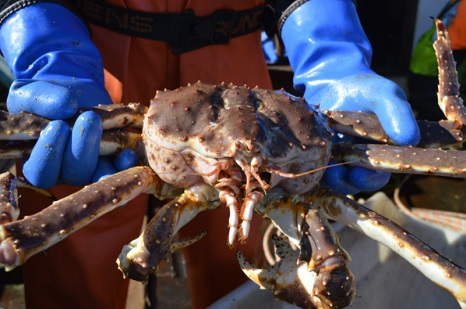
King crabs invade UK waters threatening native species
Invasive king crabs have made their way to British shores, sparking fears that local brown crab and scallop populations could be decimated. This week, fishers in North Yorkshire found their pots heavy not with brown crab, but with the bright-red invader with long, spindly legs prized for their sweet flesh. The species, native to North America, was introduced to Russia in the 1960s by scientists who wanted to establish a new, lucrative fishery. Thriving in cold seas, the crab population exploded, and they travelled to Norway, where they caused a fishing industry boom. And now they seem to have travelled all the way to Britain. >click to read< 08:38
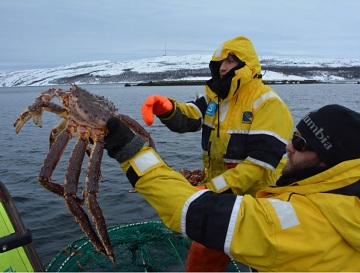
All-time high for Norwegian seafood
“2021 was another exciting export year for Norwegian seafood. We are in the very favorable position of having products in high demand the world over, even in times of crisis. This has resulted in a growth in demand, record export volumes and a total export value that Norway has never experienced before,” says Renate Larsen, CEO of the Norwegian Seafood Council. Cod is still the most important fish, One of the most exotic species from the north is the king crab. “The abolition of the quota for red king crab in Alaska combined with increased demand in Asia, the USA and Europe has led to the demand for king crab being greater than the supply,,, >click to read< 10:30
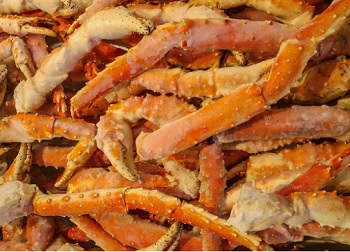
Bootstrapping – How Lowell Wakefield Made Crab King
While king crab fishing is among the most dangerous and lucrative activities in the world, it is only recent technology that makes it possible to extract this bounty from the sea,,, This has not always been the case. What is now known around the world as a culinary delicacy did not start out that way. In fact, before the mid-1940s, there were no king crab fishermen, no king crab fishing boats, and nothing that could be called a king crab industry. King crab legs simply were not widely consumed before the Second World War. Essentially, this industry was created through an evolutionary process executed by one man and his company, Lowell Wakefield and Wakefield Seafoods, Inc. A chronology of entrepreneurship. >click to read< 17:30
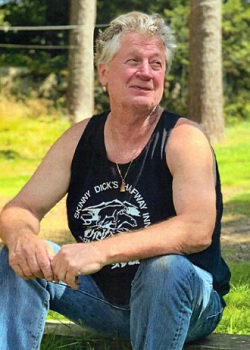
Commercial Fisherman George Roy Hutchings Jr. of Kodiak, Alaska and Damariscotta, Maine
George Roy Hutchings Jr., 60, of Kodiak, Alaska and Damariscotta, passed away peacefully on Friday, July 3, 2020 at his home here in Maine with family at his side. He attended Nobleboro Central School and Christian Academy during his grammar school days. He attended Lincoln Academy, while working in South Bristol clamming, and later earned his GED. He left Maine in his teenage years to start his adventures in fishing in Point Pleasant, N.J., then on to more adventures scallop dragging in New Bedford, Mass. At the age of 20, George headed for an even greater and larger adventure in Homer, Alaska, where, after some tough times, he became a king crab and scalloping fisherman for many years. >click to read< 09:09
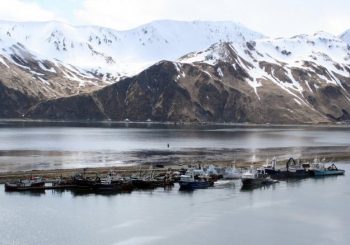
Tragic details that have come out about Deadliest Catch
The Discovery Channel’s bracing look at the lives and losses of Bering Sea crab men, Deadliest Catch, has been packing a punch since it debuted in 2007.,, Crabbing is not for the faint of heart or the fragile. The ocean, in other words, offers no safe spaces. Unfortunately for the stars of Deadliest Catch, the drama has not been confined to the high seas. Tragedy has followed the show’s captains and crew members on-shore, landing several of them in court and even in jail cells. And some who have escaped sinking or burning ships have done so only to die in hotel rooms or in their own front yards. >click to read< 15:06
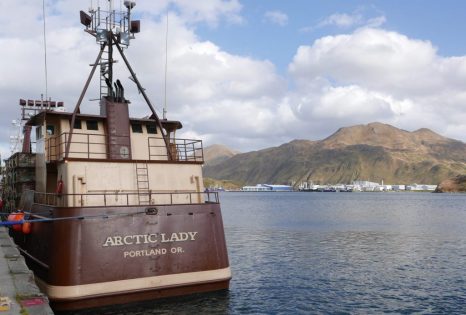
Beyond Deadliest Catch: The Fisherman in Pursuit of One of the World’s Great Delicacies
Dan Jansen had been awake for about a day and a half on his first-ever trip as captain of a crab-fishing boat way back in 1986. When there was finally a lull, Jansen left the wheelhouse to get some rest. His eyes hadn’t been shut for more than 15 minutes when he heard what sounded like an explosion. In the time it took for his feet to swivel from his bunk to the floor, Jansen’s stateroom had filled up with more than a foot of water. click here to read the story 10:46
Red king crab fishery off to a slow start
 The Bristol Bay red king crab fishery is off to a slow start, compared to last year, according to Miranda Westphal, shellfish biologist with the Alaska Department of Fish and Game in Unalaska. The season opened Oct. 15, and on Monday, just over a week into the fishery, only 1.5 million pounds had been landed. In the same time period last year, the boats had hauled in 6 million pounds. The fishery’s performance, though, is not unexpected, and is in line with what biologists learned during pre-season surveys. She said 52 boats were fishing on,,, click here to read the story 20:29
The Bristol Bay red king crab fishery is off to a slow start, compared to last year, according to Miranda Westphal, shellfish biologist with the Alaska Department of Fish and Game in Unalaska. The season opened Oct. 15, and on Monday, just over a week into the fishery, only 1.5 million pounds had been landed. In the same time period last year, the boats had hauled in 6 million pounds. The fishery’s performance, though, is not unexpected, and is in line with what biologists learned during pre-season surveys. She said 52 boats were fishing on,,, click here to read the story 20:29
Iditarod demand for king crab keeps Nome fishermen busy
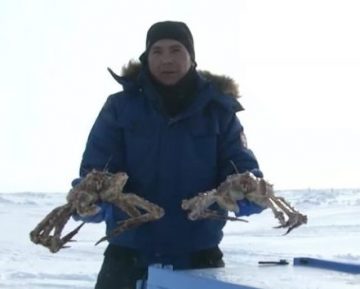 On a brisk and breezy afternoon, the stillness of the Bering Sea ice was broken up by the sounds of commercial crabbers, hard at work removing icy buildup from their crab pot openings. “We’re about four miles west of the Cape Nome. We’re currently set about 30 feet,” Greg Mendez explained. It’s part-time job for him, one that makes good money. “The market at the beginning of the year was $7.25. This time of year it drops to $6 per pound, so if you have a lot of crab that’s really good,” Mendez laughed. During the Iditarod, he sees a demand from people in Nome wanting fresh-caught crab and he’s happy to provide. Video, read the story here 08:18
On a brisk and breezy afternoon, the stillness of the Bering Sea ice was broken up by the sounds of commercial crabbers, hard at work removing icy buildup from their crab pot openings. “We’re about four miles west of the Cape Nome. We’re currently set about 30 feet,” Greg Mendez explained. It’s part-time job for him, one that makes good money. “The market at the beginning of the year was $7.25. This time of year it drops to $6 per pound, so if you have a lot of crab that’s really good,” Mendez laughed. During the Iditarod, he sees a demand from people in Nome wanting fresh-caught crab and he’s happy to provide. Video, read the story here 08:18
Southeast commercial king crab season will remain closed
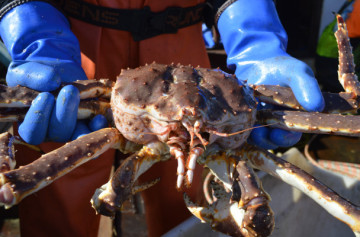 The fall red and blue king crab fishery has been opened only twice in the past decade, in 2005 and 2011.The numbers are still at historically low levels. Joe Stratman is the Alaska Department of Fish and Game’s lead crab biologist for Southeast. “The stock health in the survey areas ranged from below average to poor,” Stratman said. He and other biologists track two groups of king crab in Southeast: the legal biomass and mature biomass. Basically, the legal crabs are crabs that are big enough to be harvested in the commercial fishery. The mature biomass also includes crabs that are sexually mature but not big enough to be landed. “Both mature and legal surveyed biomasses declined on the average of 7 percent annually from 2001 to 2013,” Stratman said. Read the story here 18:06
The fall red and blue king crab fishery has been opened only twice in the past decade, in 2005 and 2011.The numbers are still at historically low levels. Joe Stratman is the Alaska Department of Fish and Game’s lead crab biologist for Southeast. “The stock health in the survey areas ranged from below average to poor,” Stratman said. He and other biologists track two groups of king crab in Southeast: the legal biomass and mature biomass. Basically, the legal crabs are crabs that are big enough to be harvested in the commercial fishery. The mature biomass also includes crabs that are sexually mature but not big enough to be landed. “Both mature and legal surveyed biomasses declined on the average of 7 percent annually from 2001 to 2013,” Stratman said. Read the story here 18:06
Not all king crab at festival is from Alaska’s well-managed fishery
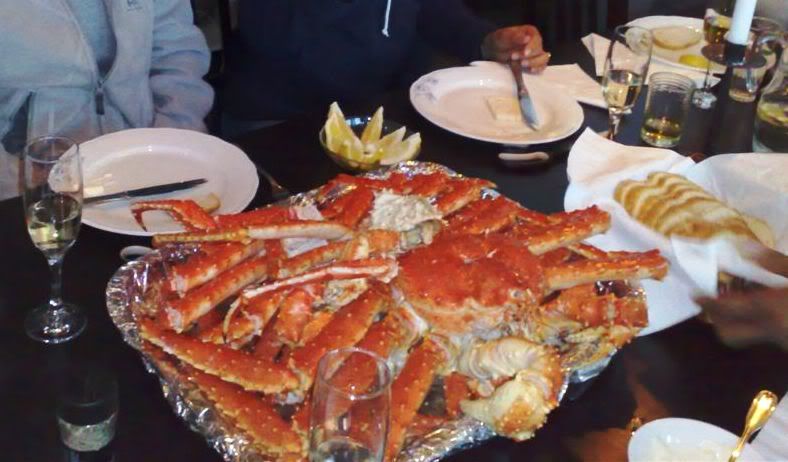 Mike Erickson, president of Alaska Glacier Seafood Co., said by phone from Juneau that in years past, his company has been a major supplier. “But our resource is dwindling. It has to be coming from somewhere.” Read more here globeandmail.com 11:37
Mike Erickson, president of Alaska Glacier Seafood Co., said by phone from Juneau that in years past, his company has been a major supplier. “But our resource is dwindling. It has to be coming from somewhere.” Read more here globeandmail.com 11:37






